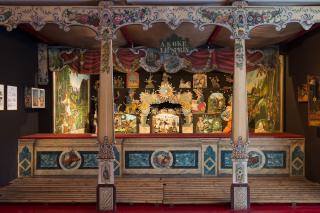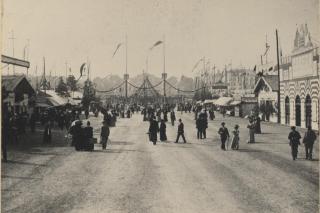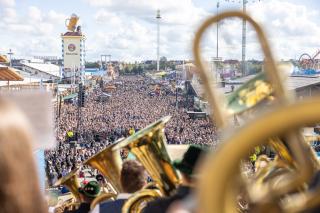An exhibition for anyone who misses Oktoberfest
Sadly, Oktoberfest only takes place once a year. The Stadtmuseum is the perfect destination for visitors to Munich who arrive outside of Oktoberfest season, and for anyone who sorely misses Munich’s most wonderful time of year.

The Stadtmuseum: not only a brilliant destination for Oktoberfest fans
A visit to the Münchner Stadtmuseum (city museum) is always worthwhile. Located in the heart of the city, at St.-Jakobs-Platz, you can visit numerous events, special and permanent exhibitions. Unfortunately, the permanent exhibition "Puppentheater/Schaustellerei" with the historical exhibits on the Oktoberfest is currently closed.
Even if you’re not (yet) a fan of Oktoberfest, a visit to the museum is always worthwhile. A mighty collection of magnificent exhibition pieces, and photos and films that do not have any connection to the world’s largest folk festival can also be found on the expansive grounds. The Stadtmuseum in Munich is Germany’s largest urban museum. Anyone who already likes Munich and wants to learn to love it should spend a few hours in the permanent exhibition ‘Typisch München!’ [typical Munich]. More than 400 objects demonstrate the history, character and inhabitants of this cosmopolitan city with heart.
The Stadtmuseum in Munich and the ‘Oide Wiesn’
When the ‘Oide Wiesn’ takes place at Theresienwiese, Munich’s Stadtmuseum goes on the move. Together with Munich’s Schaustellerstiftung association of performers, employees from an historical society of Bavarian performers [Historische Gesellschaft Bayerischer Schausteller] organize and plan the program for the museum’s tent. Entrance is free and you can admire a piece of Oktoberfest history through historical collector’s items. Real treasures come together here such as the swing boats from 1925 or the caravan that belonged to a performer family from Munich dating back to 1905. After Oktoberfest, these unique exhibition items are returned to the museum depot, where they are spruced up and maintained by employees to ensure they are presented in top condition at their next festival.

